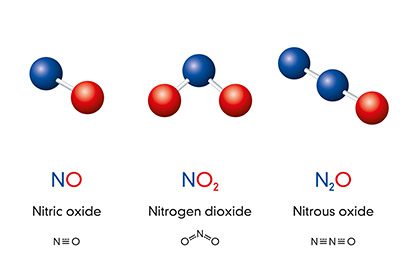3f. NOx Controls
What are Nitrogen Oxides?
Nitrogen Oxides (NOx) are a family of poisonous, highly reactive gases. These gases form when fuel is burned at high temperatures. In coal combustion, NOx is formed when nitrogen released from the coal combines with oxygen. High levels of NOx can have a direct and indirect negative effect on human health and vegetation. It can cause breathing problems, headaches, chronically reduced lung function, eye irritation, loss of appetite, and corroded teeth. Indirectly, it can affect humans by damaging the ecosystems they rely on in water and on land—harming animals and plants.
When NOx reacts with other pollutants in the presence of sunlight, it forms ozone. Ozone at high concentrations also damages vegetation.

Controlling Nitrogen Oxide Emissions
At coal-fired power plants, the formation of nitrogen oxides can be reduced in the boiler by controlling airflow during combustion. In a typical boiler, excess air was added to ensure all the coal was combusted. Once operators realized excess air increased the formation of NOx, they reduced the amount of air injected into the boiler. Adding air at a higher spot in the boiler also reduces NOx formation by 50% or more. The remaining NOx can be removed by injecting urea, which breaks the nitrogen oxide down.
